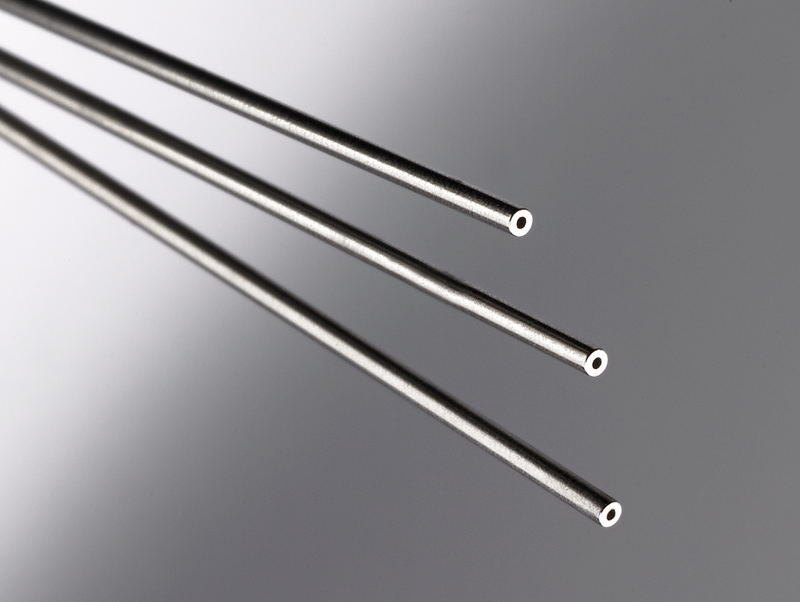How to Balance Rough and Smooth in Orthopedic and Dental Implants
The development of 3D printing technology has had a revolutionary impact on the medical device industry, opening up unlimited new possibilities in product design and mass customization. However, there is an interesting twist — the need for polishing metal parts — in some of the most popular applications.
Specifically, due to the rough finish and inherent porosity of the 3D printed surfaces, metal polishing is often needed for the 3D printed metal parts used for orthopedic and dental implants.
Surface Finish and Porosity of 3D Printed Metal Parts
There are a number of methods used to make 3D printed metal parts. For instance, they may be created in a special atmosphere, such as when building titanium parts in an argon atmosphere. Or 3D printed metal parts may be made using direct metal laser sintering (DMLS), selective laser melting (SLM), electron beam melting (EBM), or some other process.
Whichever method is used, the nature of 3D printing is that three variables determine the finish of a part and its density (or porosity):
- The “elevator” layer steps of the printing process
- The laser beam size
- The metal particle size
Why Use 3D Printed Metal Parts for Implants?
In addition to the capacity for mass customization, 3D printing of metal parts offers a specific benefit for orthopedic and dental implants.
Namely, the combination of three metallurgical variables noted above creates a very rough, porous finish that promotes the fusing of bone and other tissue to the implant. That fusing is critical to the success of the procedure.
But what if you need a smooth finish, such as in a joint implant where good wear characteristics are needed? That is when polishing of metal parts comes into play.
The Role of Polishing Metal Parts in 3D Printed Implants
For an application such as a 3D printed knee implant, part of the surface needs to be rough and porous to allow bone to fuse to the implant. However, on the wear surface of the knee, you need a finish that is as smooth as possible, to:
- Reduce friction
- Ensure that the implant has a reasonably long life
- Reduce the risk of the implant causing pain in the recipient
The same principle applies to hips, shoulders, and other types of implants where there is both a wear surface and a surface that must fuse with bone or other tissue.
In the U.S. alone, each year millions of people undergo hip or knee replacement surgery. In recent years, there have been a number of well-publicized lawsuits related to:
- Device failure
- Pain or injury linked to these types of implants
- Excessive wear, causing the devices — which are intended to last about 20 years — to be replaced early
Fortunately for implant manufacturers, the proper finishes can be achieved by combining the use of 3D printing and the proper technique for polishing metal parts.
This allows certain surfaces of 3D printed metal implants to be made as smooth as possible while other surfaces maintain the roughness and porosity required for effective implant-to-tissue fusion.
The Goals When Polishing 3D Printed Metal Parts
There are a number of ways to polish metal parts. The methods range from labor-intensive and precise (and therefore, more costly) hand polishing to various automated abrasion methods and polishing by laser or electron beam. The goal of all these techniques is to obtain a surface finish that is smooth and free of porosity.
For polishing metal parts created through very precise 3D printing, the ability to tightly control material removal is vitally important. It helps to ensure that the original form of the part — with all its tight dimensional tolerances — is preserved.
In general, that means the polishing technique for 3D printed parts must achieve the specified smoothness while removing the smallest possible amount of material. This is especially true for metal parts having complex geometries, sharp edges, and fine details.
Therefore, when polishing metal parts for 3D printed orthopedic or dental implants and other medical devices, the focus is primarily on maintaining tolerances. This is true even for applications where there is a need for a highly shiny, even mirror-like finish.
Custom metal polishing is an area where, depending on the type of metal used, Metal Cutting can achieve a surface finish of Ra 0.1 µm and below while maintaining tight tolerances and minimal material removal. The result is a surface finish that provides the required technical properties for use in implants and other medical devices.
(Learn more in our blog Metal Polishing in a World of 3D Printed Parts.)
Expert Metal Polishing for Implants and Medical Devices
Metal Cutting will continue to meet the changing needs of the medical device industry and the latest advances in medical technology. As a precision metal fabricating company, our expert capabilities include very tight tolerance cutting, grinding, lapping, and polishing of all metals for medical device applications.
We also provide secondary operations such as bending, angle cutting, and pointing and slotting of small diameter tubes, wires, and rods. In addition, tungsten and molybdenum products, such as wire, ribbon and rod, are available.
To learn more about specifying precision metal tubing for your medical device needs, download a free copy of our comprehensive guide, Metal Tubing in the 21st Century: Who Needs It? The Future of Innovation in Medical Devices.






